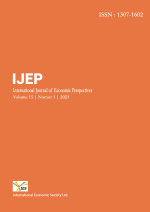Mahatma Gandhi's perspective on women's participation in freedom struggle
Keywords:
education, freedom struggle, Indian society, perspective, women participationAbstract
Large numbers of women participated in India's freedom struggle. Indian society wasn't so congenial for women's participation in the political and social sphere of India. India has a long history of women's victimization and slavery. Women were kept deprived of education, freedom, rights, and privileges for ages. But, the British attracted the attention of Indians toward the miserable condition of Indian women during the nineteenth century. As a result of the social and political scenario, women's enlightenment movements gained traction in the nineteenth century. Women gradually started receiving education. They became aware due to education and participated in the political and social sphere of India. Some elite, upper-class, and socio-politically inherited women were already involved in the freedom struggle movement. Due to the influence of Tilak, women started participating in the freedom struggle movement during Tilak era. In 1920, importance was given to Mahatma Gandhi's persona for the participation of women in the freedom struggle during Gandhi's era. But, Mahatma Gandhi's perspective was too conservative regarding women's participation in the freedom struggle. Later on, his perspective became all-pervasive and many women dedicated their lives for the sake of freedom struggle, and some of them martyred in it.
References
Agarwal, B. (2009). Gender and forest conservation: The impact of women's participation in community forest governance. Ecological economics, 68(11), 2785-2799. https://doi.org/10.1016/j.ecolecon.2009.04.025
Alderman, D. H., Inwood, J. F., & Bottone, E. (2021). The mapping behind the movement: On recovering the critical cartographies of the African American Freedom Struggle. Geoforum, 120, 67-78. https://doi.org/10.1016/j.geoforum.2021.01.022
Caspi, A., Chajut, E., & Saporta, K. (2008). Participation in class and in online discussions: Gender differences. Computers & Education, 50(3), 718-724. https://doi.org/10.1016/j.compedu.2006.08.003
Chrisman, J. J., Chua, J. H., & Litz, R. (2003). A unified systems perspective of family firm performance: An extension and integration. Journal of Business Venturing, 18(4), 467-472. https://doi.org/10.1016/S0883-9026(03)00055-7
Kothari, Dr. Anil. Bhartiy Stree Chalwalicha Itihaas.
Kumar, Radha. Stree Sangharsh Ka Itihaas.
Peter, V. F. (2015). Relationship among culture, education and sports. International Research Journal of Management, IT and Social Sciences, 2(11), 38-42. Retrieved from https://sloap.org/journals/index.php/irjmis/article/view/326
Psacharopoulos, G. (1994). Returns to investment in education: A global update. World development, 22(9), 1325-1343. https://doi.org/10.1016/0305-750X(94)90007-8
Shenthar, J., Bohra, S., Jetley, V., Vora, A., Lokhandwala, Y., Nabar, A., ... & Gupta, S. B. (2016). A survey of cardiac implantable electronic device implantation in India: By Indian Society of Electrocardiology and Indian Heart Rhythm Society. Indian heart journal, 68(1), 68-71. https://doi.org/10.1016/j.ihj.2015.06.037
Simms, R. (2000). Black theology, a weapon in the struggle for freedom: A Gramscian analysis. Race and Society, 2(2), 165-193. https://doi.org/10.1016/S1090-9524(00)00014-0
Srivastava, R. (2006). Indian Society for Apheresis and apheresis tourism in India–Is there a future?. Transfusion and Apheresis Science, 34(2), 139-144. https://doi.org/10.1016/j.transci.2005.12.005
Sukiada, I. N. (2017). The strategy at improving of Balinese women representation in the legislature. International Research Journal of Management, IT and Social Sciences, 4(1), 15-23. Retrieved from https://sloap.org/journals/index.php/irjmis/article/view/434
Vandan Krantikariyo Ko.
Vesper, K. H., & Gartner, W. B. (1997). Measuring progress in entrepreneurship education. Journal of Business venturing, 12(5), 403-421. https://doi.org/10.1016/S0883-9026(97)00009-8
Williamson, O. E. (1987). Transaction cost economics: The comparative contracting perspective. Journal of economic behavior & organization, 8(4), 617-625. https://doi.org/10.1016/0167-2681(87)90038-2
Published
How to Cite
Issue
Section
Copyright (c) 2021 Vaishali Ramesh Chopde

This work is licensed under a Creative Commons Attribution 4.0 International License.
Allows users to: distribute and copy the article; create extracts, abstracts, and other revised versions, adaptations or derivative works of or from an article (such as a translation); include in a collective work (such as an anthology); and text or data mine the article. These uses are permitted even for commercial purposes, provided the user: gives appropriate credit to the author(s) (with a link to the formal publication through the relevant URL ID); includes a link to the license; indicates if changes were made; and does not represent the author(s) as endorsing the adaptation of the article or modify the article in such a way as to damage the authors' honor or reputation. CC BY







